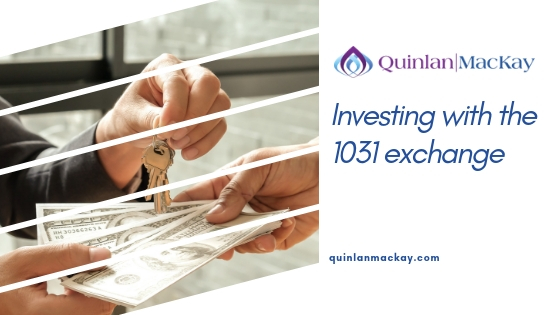
Real estate investors are taking advantage of the 1031 exchange to defer taxes on their capital gains. The 1031 exchange, which is also called the “like-kind exchange,” is named after the section of the IRS code the law is in. This section of the IRS code was refined in 2017, so now there are more boundaries and benefits for these exchanges.
The purpose of a 1031 exchange is to allow real estate investors the opportunity to exchange one investment for another, as long as they are like-kind. “Like-kind” has a broad definition; it allows investors to exchange any real estate investment or business, regardless of the type of building. However, this exchange cannot be used on personal property, including vacation homes, unless it is used for renting purposes and conducted as a business for at least six months to a year.
To take advantage of the 1031 exchange, investors have two options:
- Exchange their current property for another right way.
- Perform a delayed, or Starker, exchange.
The classic 1031 exchange
The first option is the simplest. The investor sells their investment property and turns around to buy another one. They are then able to avoid paying income taxes on the exchange. They may be able to avoid paying state taxes if they fill out the appropriate exemption forms.
The classic example is where two sellers exchange their properties. This would require two people selling their investment properties simultaneously and with similar values, which is a rare occasion. If this event does happen, both parties exchange money and properties without outside assistance.
The Starker exchange
A “Starker exchange” defers the exchange itself. This event calls for a third party who acts as an intermediary. The investor sells their property and the qualified intermediary holds onto the money from the sale. The investor has 45 days from the sale of their previous property to designate a new investment property for the exchange. They have 180 total days after the sale of their previous property to close on the sale of the new investment property. The intermediary conducts the sale for the investor and the investment’s income taxes are deferred. However, if the investor buys an investment property for less than their initial investment property, those capital gains will be taxed.
More than tax deferment
Using the 1031 exchange has more advantages than just deferring taxes. Many real estate investors utilize it to upgrade their current real estate investments to more expensive options. To do this, they often sell one property to purchase multi-family residential housing or multiple smaller properties. Another option investors take is to essentially trade several smaller properties for a new multi-family building. Since separate properties require separate management, this exchange simplifies the management process. These new investments may increase profit while lowering maintenance costs. For this reason, many investors call these opportunities “upgrades.” Plus, this can simplify an investor’s rental portfolio.
Choosing to take advantage of the 1031 exchange can increase your investment options and overhaul your portfolio. To learn more about how Quinlan | MacKay can also increase your investment options and overhaul your portfolio, please contact us.
